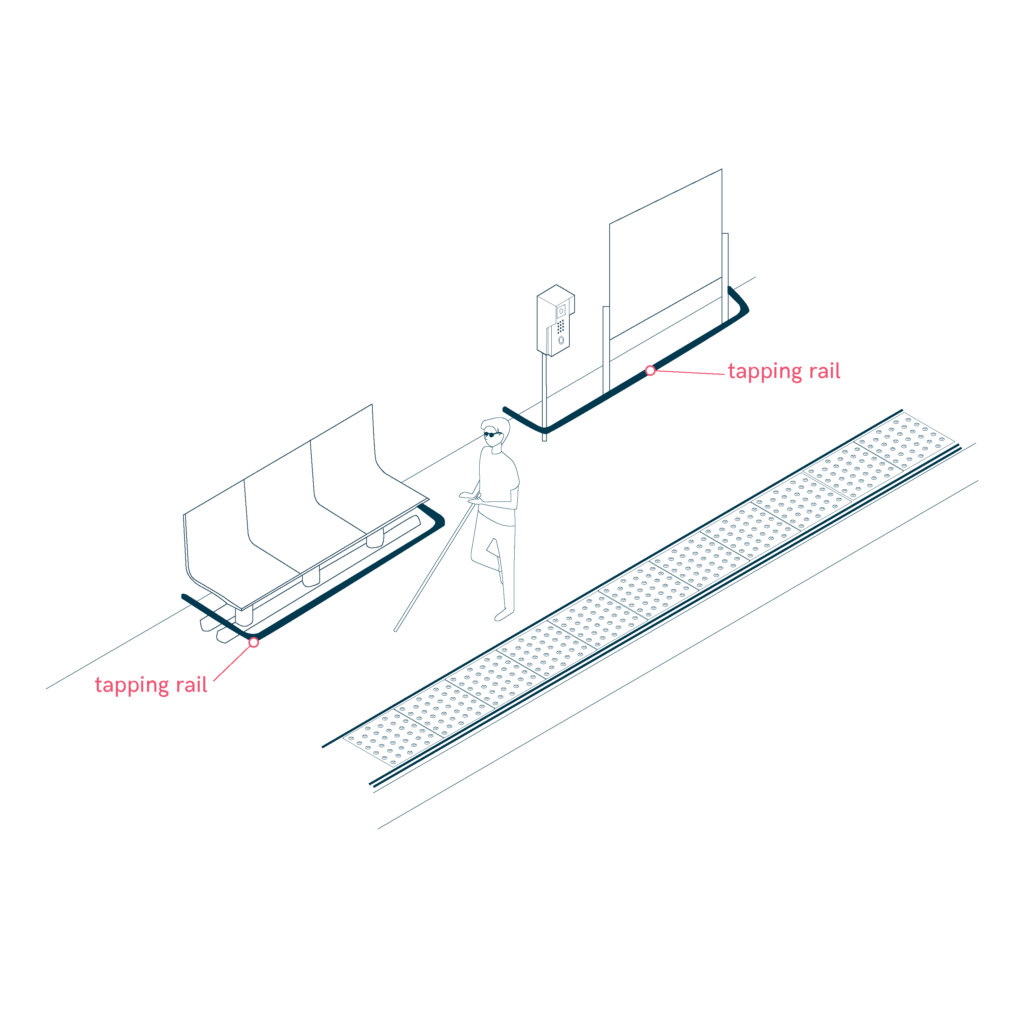Complementary measures to tactile floor
The implementation of tactile flooring must be an integral part of urban design, ensuring that it is used only where necessary to avoid excessive information that could confuse or endanger users. Overuse may lead to contradictory signals, reducing overall effectiveness.
Tactile surfaces should be complemented with additional accessibility measures that consider the needs of all users. For instance, while curbs help visually impaired individuals avoid accidentally crossing a roadway, they can also be barriers for wheelchair users. Therefore, urban planning should balance these considerations to create inclusive environments.
Additionally, tactile flooring should be maintained regularly and supported by complementary accessibility features such as tactile signs, acoustic signals, and protective barriers to prevent collisions with obstacles. These measures help ensure that all users, especially those with visual impairments, can navigate public spaces safely and efficiently.

- void excessive use to prevent confusion and contradictory signals.
- Ensure integration into urban design without overwhelming users.
- Balance the needs of all users (e.g., curbs aid visually impaired individuals but may obstruct wheelchair users).
- Implement solutions that promote inclusive urban environments.
- Conduct routine maintenance to maintain effectiveness and durability.
- Use complementary measures such as tactile signs, acoustic signals, and protective barriers to enhance accessibility and safety.
Sources
- https://www.une.org/encuentra-tu-norma/busca-tu-norma/norma?c=N0069408
- https://accessible-eu-centre.ec.europa.eu/content-corner/digital-library/en-172102021-accessibility-and-usability-built-environment-functional-requirements_en
- https://www.access-board.gov/adaag-1991-2002.html#2.%20GENERAL
- https://universaldesign.ie/built-environment/building-for-everyone/building-for-everyone-full-series
- https://www.codigotecnico.org/pdf/Documentos/SUA/DccSUA.pdf
- https://www.networkrail.co.uk/wp-content/uploads/2024/05/NR-GN-CIV-300-06-Tactile-Paving-wayfinding.pdf
- https://assets.publishing.service.gov.uk/media/61df0c91e90e07037794fe90/guidance-on-the-use-of-tactile-paving-surfaces.pdf
- Carers
- Children
- Cognitive
- Cognitive abilities
- Decolonial perspective
- Digital
- Digital barrier
- Enviroment
- Environmental
- Gender and generations
- Gender perspective
- Hearing impairment
- Low-education
- Low-income
- Older people
- Other
- Physical abilities and features
- Sensory and Physical
- Socioeconomic
- Visual impairment